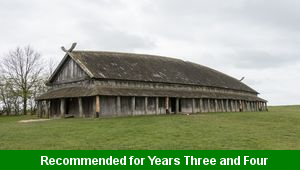English Year Six Planning Term Three
Discover schemes of work, lesson plans, classroom worksheets and interactive activities to develop skills in English for Year Six in Key Stage Two covering a range of fiction, non-fiction and poetry topics and themes
Theme One
Fact and Fiction
Investigate how to compose stories matching different genres, practise writing recounts, explanations and speeches on a range of topics, explore spellings of words with suffix endings and model how to use different forms of punctuation when composing sentences.

(A) Story Structures
Investigate the common structures and features of a range of different types of stories and poems, practise adding suffixes to different word roots and use commas to punctuate sentences

(B) Story Library
Identify features of narrative genres to plan and write a story to match the structure of one type of writing, investigate and use spellings of words with silent letters and learn how to use semi-colons to link independent clauses in sentences

(C) Robots and Adventures
Investigate the text structures and content of explanations and recounts and plan and write matching texts, explore and use spellings of words with cious and tious word endings and use colons to mark the boundary between sentence clauses

(D) Viewpoints
Practise using persuasive and discursive language to discuss and argue points of view in letters and magazine articles, identify and use rules to learn new spellings and practise using brackets, dashes or commas to indicate parenthesis in sentences
Theme Two
Families
Practise composing a narrative story about a family modelled on a story by a significant author, write instructions for families to follow when completing tasks and create poems using different forms to illustrate family life

(E) Family Scenes
Explore how authors illustrate character relationships in a story about family life, identify the meanings and spellings of confusing words and use the perfect form of verbs to indicate timing
-

Rainforest Conservation
Identify, illustrate and debate some of the different reasons as to how and why tropical rainforests should be protected and conserved for the future
-

New Start
Explore how to prepare for and deal with some of the new events and special occasions that someone might experience in life
-

Viking Settlement
Explore how the Vikings settled and built communities in Britain in the past by referencing their culture and traditions
-

Changing Seasons
Investigate changes that can happen to the natural world during the four seasons of the year and reflect on similar changes that can occur in people’s lives
